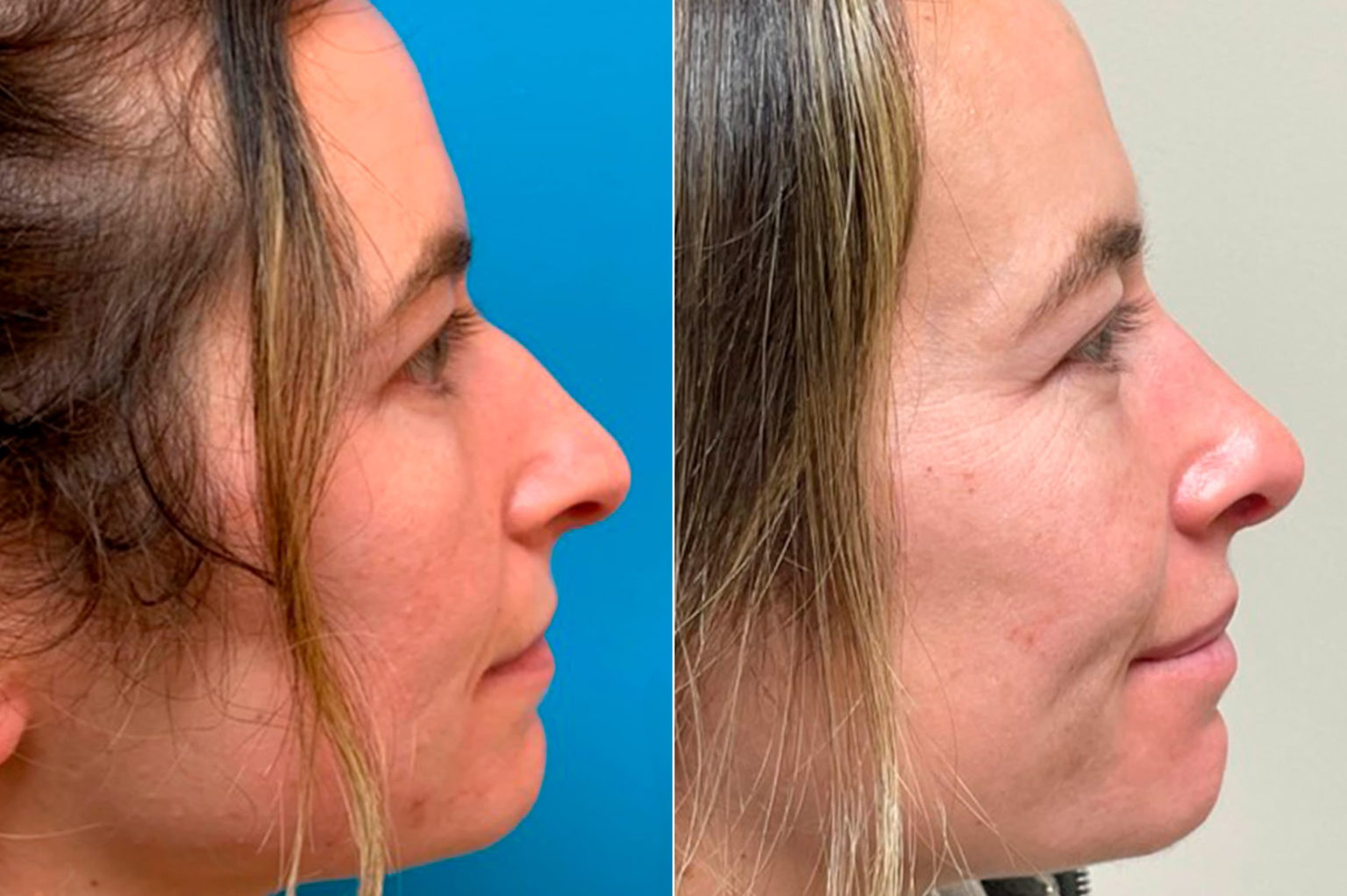When the tip of the nose seems to be sagging, it may make many individuals feel self-conscious about their appearance. Additionally, it might obstruct the airway, resulting in breathing difficulties.
Many reasons might contribute to a drooping nasal tip. Among these include excessive cartilage around the nose, aging, a lack of cartilage rigidity, and even severe incidents. Additionally, muscular tension at the nasal tip may result in a drooping look.
The nasal tip of each individual is angled differently in relation to the face. The nose is naturally positioned lower in certain ethnic groups than in others. Those from Mediterranean nations are often more genetically inclined to have a droopy nasal tip compared to those from other European regions.
Certain individuals develop a drooping nasal tip, particularly when they smile. This might result from the nasal base and upper lip ligaments being too tight. Additionally, it might be caused by a contracted muscle called the depressor septi that runs between the bottom of the nose and the upper lip.
There are several non-surgical options for treating the condition. Botox is sometimes used to relax the muscles that contribute to a sagging nose. Certain cosmetic surgeons may also employ dermal fillers to add definition to the skin surrounding the nose or enhance the nose’s overall structure and contours.
These techniques are temporary and helpful for minor instances of drooping nasal tips. However, for people who require more extensive treatment to repair a drooping nose tip or are recovering from an inadequately performed earlier nasal tip correction operation, a surgical alternative is best suited.
Where to begin
Pick a surgeon with expertise performing nose plastic surgery and a track record of patient satisfaction. The American Board of Plastic Surgery (ABPS) is the most recognized institution that provides for certification of plastic surgeons.
It is recommended that the procedure be performed at an accredited facility. If a problem occurs, an expert surgeon and his or her well-trained staff will be able to identify and rectify the issue.
Arrange a consultation to discuss your objectives and explain to the doctor what you dislike about your nose and how you want to improve it.
Bear in mind that a perfect nose does not exist. However, surgery may accentuate your unique and natural attractiveness by enhancing facial traits. A plastic surgeon can identify the facial characteristics that make you distinctive and advise you on how to improve your look through alterations.
Your nose and other facial characteristics will be evaluated by the surgeon. They can determine whether your expectations are reasonable after this review.
Additionally, the surgeon will assess your general health and explain the risks, duration of recovery, and associated expenses.
The nose may be reshaped using a variety of ways. Once you’ve decided to proceed, your surgeon should outline the procedure in detail.
Do You Qualify?
Before beginning therapy, your surgeon will need to examine your whole body to evaluate whether or not you are in good health. This kind of surgery may require a local anesthetic since it involves strategically placed incisions. You will also need to follow a few guidelines to ensure that the operation is performed successfully.
The surgeon may instruct you to stop taking certain drugs and abstain from smoking as part of your treatment. Droopy nose rhinoplasty may be performed on patients of any age as long as the nose has finished developing.
How It’s Done
To realign and tighten a drooping nose tip, rhinoplasty surgery is required. This often entails splitting the depressor septi muscle and then anchoring the nasal tip cartilages to provide strong support higher up in the nose.
Droopy-tip
The nasal septum is one of the strongest nasal supports. Once straight, this is most likely the greatest anchor for repositioning a nasal tip. Sutures may be utilized to connect the septum’s tip to the nasal tip cartilages. The new location of the tip may be calculated before surgery, and the surgeon can generally reach a position that is pretty near to the expectation. When the septum becomes excessively floppy, additional grafts, such as a spreader graft or caudal septal extension graft, may be required. In certain situations, these grafts may need to be cut from rib cartilage.
Males often have nasal tips that are 90 degrees to the face. Female tips usually appear best when turned slightly upwards. When addressing a droopy tip, the surgeon must be careful enough not to rotate the tip too far upwards. When seen from the front, this might make the nose seem excessively feminine or disclose too much nostril.
Are there any risks involved with the procedure?
The risks associated with correcting a droopy nose include bleeding, infection, and scarring. The possibility of tip movement is also imminent. Once the tip is attached to the septum, any movement caused by trauma or aging will result in tip movement. Additionally, the tip may feel somewhat stiffer, as it now has additional support maintaining it in place. If the ligaments that keep the tip in place continue to deteriorate, it may droop somewhat more over time.
Recovery
You’ll need a ride home after your procedure, so arrange for someone to pick you up ahead of time. Swelling and pain may be present, but your doctor may prescribe medicine to help ease these symptoms. You’ll need to keep your head elevated and use cold packs to reduce swelling as you relax.
Itching may occur in certain individuals, but it will eventually go away. The swelling may take up to 15 days to subside. You may resume modest activities in the days following surgery; nevertheless, heavy labor is not permitted for a few weeks. Surgical tape may also be necessary to cover the nose.
As the wounds heal, you’ll need to take precautions to avoid becoming sunburned. After a few weeks, the surgical scars erase, and the nose tip may take a few months to return to its pre-surgery feelings.
Final Remarks
Correcting a drooping nose is one of the most often performed cosmetic rhinoplasty procedures. The methodologies are well-established, and the results are usually reliable and predictable. Select an expert rhinoplasty surgeon to guarantee that you attain your ideal shape of the nose.
Image Reference:- https://www.therhinoplastycenter.com/before-and-after/early-after-surgery-results-photos-9394







